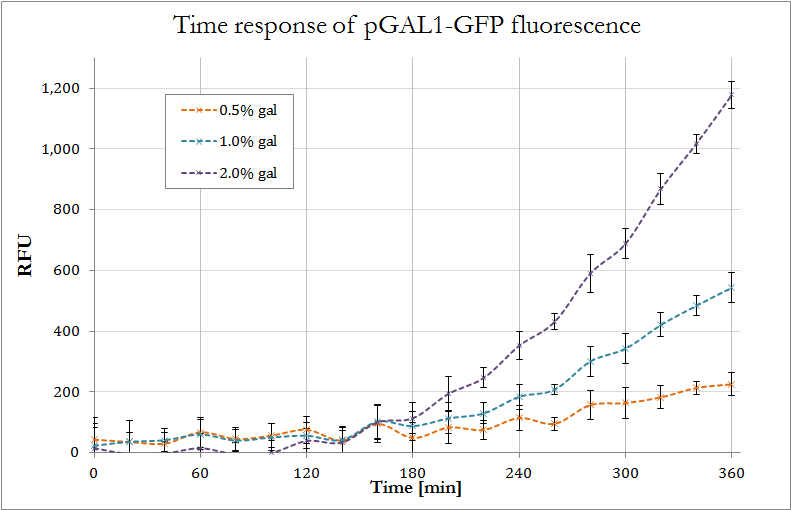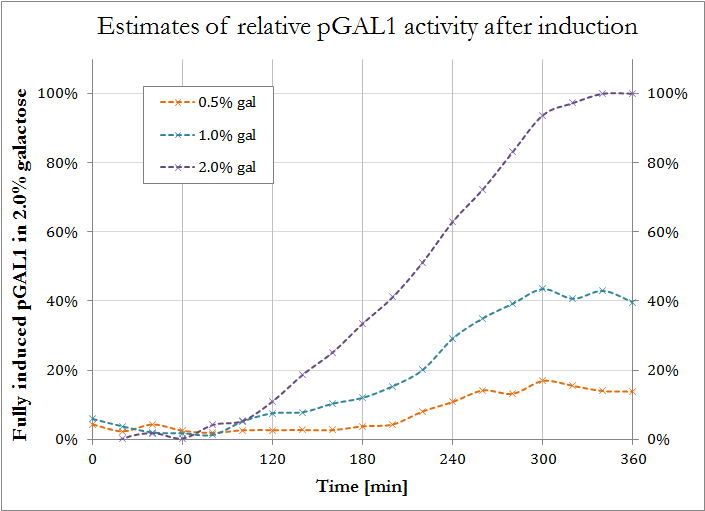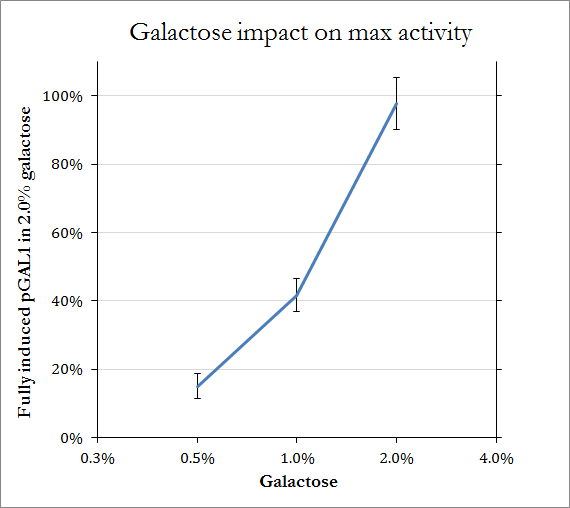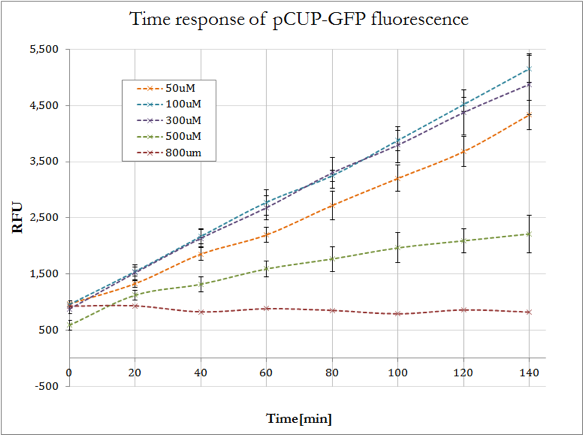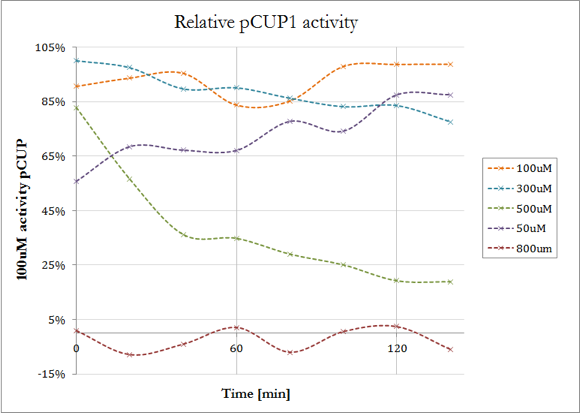Team:Czech Republic/Description
Description
Contents
pGAL1 ([http://parts.igem.org/Part:BBa_J63006 BBa_J63006])
3 different concentrations (0.5%, 1%, 2%) of galactose were added to 100 µl yeast culture in SD min medium. We measured the fluorescence in 20 minutes intervals for 6 hours using a plate reader.
The first graph shows evolution of fluorescence in time. We subtracted fluorescence of negative control from the fluorescence of each sample and divided this by difference between sample´s and negative control´s ODs in order to obtain RFU units.
Our measurement showed that the higher concentrations causes quicker and higher activation of the promoter.
Since 2% appears to be the convenient concentration for maximal activation of the promoter in our experiment we used it as a reference and related the activity of other concentration to this concentration. Results are displayed in the second graph.
The third graph show the static response characteristic, dependence of activation of concentration, related to the 2% concentration.
pCUP1 ([http://parts.igem.org/Part:BBa_K945002 BBa_K945002])
The activity of pCUP1 promoter was characterized by transforming pCUP1-GFP plasmids into yeast S. cerevisiae and measuring the evolution of fluorescence in time.
5 different concentrations (50 μM, 100 μM, 300 μM, 500 μM and 800 μM) of CUP were added to 100 µl yeast culture in SD min medium. 100 μM concentration was recommended as the most efficient in literature. We measured the fluorescence in 20 minutes intervals for 140 minutes using a plate reader.
The first graph shows evolution of fluorescence in time. We subtracted fluorescence of negative control from the fluorescence of each sample and divided this by difference between sample´s and negative control´s ODs in order to obtain RFU units.
Our measurement confirmed that 100 μM concentration causes quickest activation of the pCUP promoter. The obtained curve is almost linear. 300 μM concentration curve is similar, however the maximal activation of the promoter is slightly lower. Activation when using 500 μM concentration is relatively low. Measurement showed that the 800 μM is fatal for the yeast culture.
Since 100 μM appears to be the convenient concentration for maximal activation of the promoter we used it as a reference and related the activity of other concentration to this concentration. Results are displayed in the second graph.
